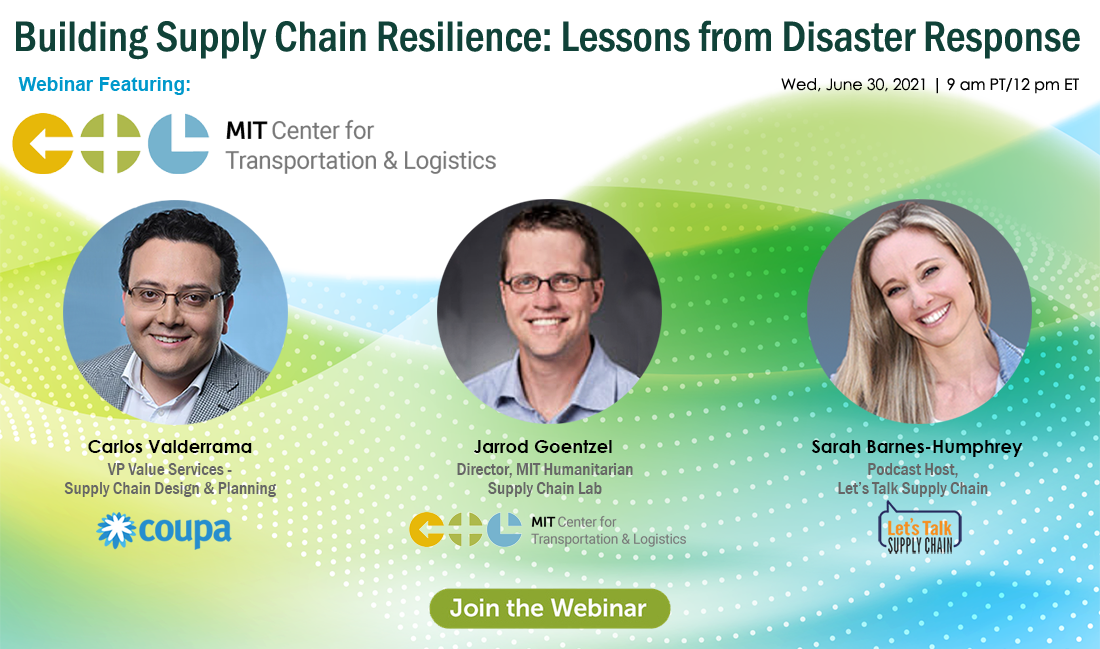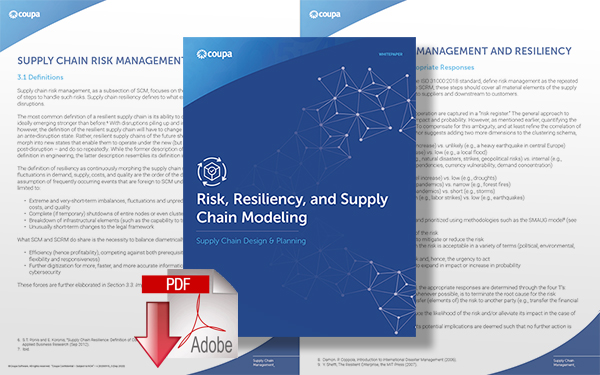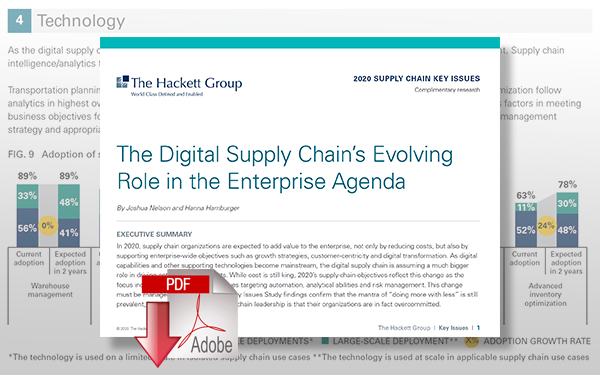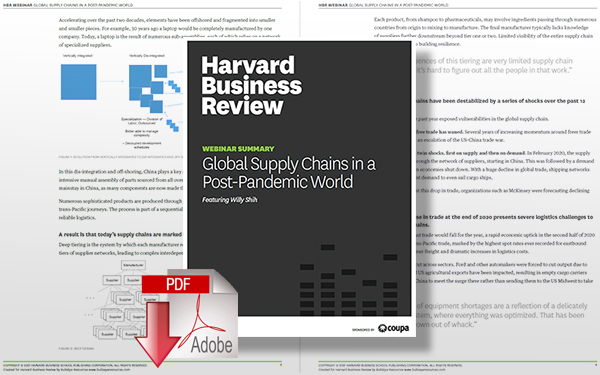2021 The Year for Companies to Build Supply Chain Resiliency

The C-suite is now putting a strong focus on supply chain resiliency with CEOs and CFOs seeing it as an essential strategy to reduce organizational risk and drive competitive advantage.
Supply Chain Resiliency
While it took a year of unprecedented disruption, the C-suite is now putting a strong focus on supply chain resiliency.
CEOs and CFOs no longer view the supply chain as just a business function that mainly operates in the background.
They see it as essential to reduce organizational risk and drive competitive advantage.
There was initial hope that 2021 would bring about a full return to normalcy.
But now, many business leaders are approaching the remainder of 2021 with caution.
Although vaccines are rolling out and restrictions are being lifted, COVID-19 disruptions are likely to continue throughout the year.
And even when we finally break free from the grips of the pandemic, we know that another disruption - whether natural or political - is inevitable.
The Supply Chain Takes Center Stage
In December 2020, I wrote in an article for Business Chief where I stated that the supply chain would take center stage in the business agenda for this year.
As we enter Q2/3 2021, we can see this playing out:
- CFOs are taking a greater interest in how supply chains support business growth and reduce financial risk. The financial implications of supply chain disruption or inefficiency can be significant, with over 80% of a company’s costs tied up in the supply chain.
- Technology will play an essential role in improving efficiency and managing risk. Advanced technologies like machine learning, artificial intelligence, and digital twins were once considered luxuries but are now required to remain competitive. This is highlighted in the Gartner Hype Cycle for Supply Chain Planning Technologies.
- For the healthcare and life sciences industry, improvements will be imperative. This is an industry that is lagging behind others such as FMCG or high tech in terms of supply chain technology adoption. Yet, healthcare continues to be an industry that the world depends on, more than ever, in 2021.
- Until responding to pandemic disruption became the primary focus, the most pressing priority for many companies was sustainability and pledges to be carbon neutral by 2030. That goal may now need to compete with the need to achieve greater end-to-end visibility across the supply chain to identify vulnerabilities and risks. However, by achieving visibility, organizations can more accurately identify the inefficiencies that contribute to CO2 emissions and use these insights to make their supply chains more sustainable.
2020 was the year that pre-existing supply chain rulebooks were thrown out.
2021 is shaping up to be the year where business models are adapted to new ways of working.
If businesses want to survive and succeed in a world where one disruption replaces the next, resilience and agility, powered by the latest supply chain technology, will be crucial.
Webinar: Join Jarrod Goentzel (director of the MIT Humanitarian Supply Chain Lab at MIT CTL) on Wednesday, June 30, for an interactive discussion on Building Supply Chain Resilience: Lessons from Disaster Response, moderated by Let’s Talk Supply Chain’s Sarah Barnes-Humphrey.
Building Supply Chain Resilience: Lessons from Disaster Response
Supply chains are constantly in the news with disruptions that cause global impact. In response, executive agendas now place supply chain resilience at the forefront to combat this ever-changing reality.
These supply chain experts will share:
- Lessons learned from disaster response efforts over the years, including ensuring continuity of essential supplies
- Stories about how the commercial sector dealt with recent disruptions
- Details of the importance of supply chain design in enabling resilience

Related Resources
Risk, Resiliency, and Supply Chain Modeling
This paper first examines why existing supply chain management practices do not naturally develop resilient supply chains and why some of the existing supply chain processes are not suitable for addressing such risks and required responses. Download Now!
Digital Supply Chain’s Evolving Role in the Enterprise Agenda
The Hackett Group 2020 Key Issues Study findings confirm that the mantra of “doing more with less” is still prevalent, but the top concern of supply chain leadership is that their organizations are in fact overcommitted, AI analytics to enable a more agile supply chain. Download Now!
Global Supply Chains in a Post-Pandemic World
In this webinar summary, Willy Shih, Robert and Jane Cizik Professor of Management Practice in Business Administration at Harvard Business School, shares insights into how global supply chains came to be the way they are and how their vulnerability has been revealed through numerous crises. Download Now!
More Resources from Coupa
Article Topics
Coupa News & Resources
How Microsoft Improved ESG & Sustainable Spending Working Together with Community.ai Capabilities Supply Chain Agility in an Ever-Changing World How Sourcing Can Respond in Dynamic Markets to Drive Supply Chain Value Build Resilience in Supply Chains by Modeling & Designing Multiple Demand Futures Beyond Disruptions: Building the Next Generation of Resilient Supply Chains 6 Truths About Business Spend Management Technology 5 Ways Supply Chains Can Flourish in an Inflationary World More CoupaLatest in Supply Chain
How Supply Chains Are Solving Severe Workplace Shortages SAP Unveils New AI-Driven Supply Chain Innovations How Much Extra Will Consumers Pay for Sustainable Packaging? FedEx Announces Plans to Shut Down Four Facilities U.S. Manufacturing is Growing but Employment Not Keeping Pace The Two Most Important Factors in Last-Mile Delivery Most Companies Unprepared For Supply Chain Emergency More Supply Chain

















